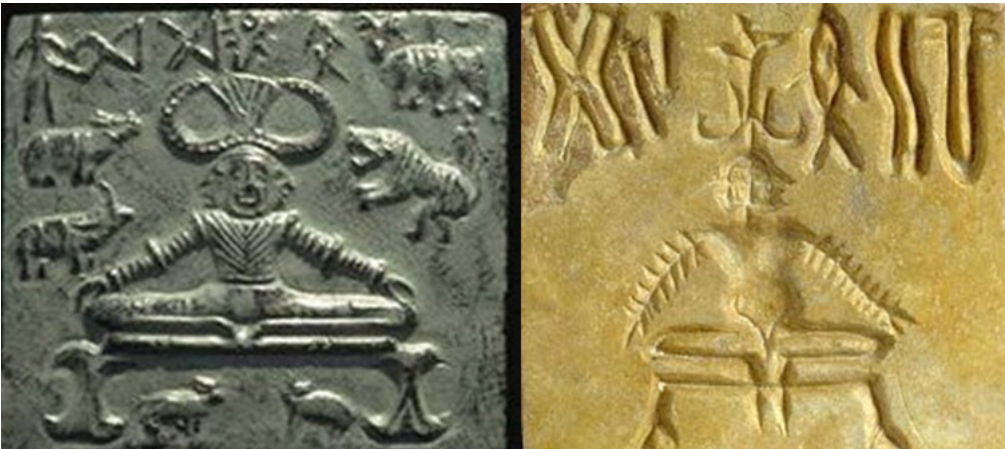Yoga is essentially a spiritual discipline based on an extremely subtle science, which focuses on bringing harmony between mind and body. It is an art and scince of healthy living. The word ‘Yoga’ is derived from the Sanskrit root ‘Yuj’, meaning ‘to join’ or ‘to yoke’ or ‘to unite’. As per Yogic scriptures the practice of Yoga leads to the union of individual consciousness with that of the Universal Consciousness, indicating a perfect harmony between the mind and body, Man & Nature.
In the yogic lore, Lord Shiva is seen as the first yogi or Adiyogi, and the first Guru or Adi Guru.
Several Thousand years ago, on the banks of the lake Kantisarovar in the Himalayas, Adiyogi poured his profound knowledge into the legendary Saptarishis or "seven sages”. The sages carried this powerful yogic science to different parts of the world, including Asia, the Middle East, Northern Africa and South America. Interestingly, modern scholars have noted and marvelled at the close parallels found between ancient cultures across the globe. However, it was in India that the yogic system found its fullest expression.
Agastya, the Saptarishi who travelled across the Indian subcontinent, crafted this culture around a core yogic way of life.
Historical evidences of the existence of Yoga were seen in the pre-Vedic period (2700 B.C.), and thereafter till Patanjali’s period. The main sources, from which we get the information about Yoga practices and the related literature during this period, are available in Vedas (4), Upanishads(108), Smritis, teachings of Buddhism, Jainism, Panini, Epics (2), Puranas (18) etc..
Yoga does not adhere to any particular religion, belief system or community; it has always been approached as a technology for inner wellbeing. Anyone who practices yoga with involvement can reap its benefits, irrespective of one’s faith, ethnicity or culture.Traditional Schools of Yoga :These different Philosophies, Traditions, lineages and Guru-shishya paramparas of Yoga lead to the emergence of differnt Traditional Schools of Yoga e.g. Jnana-yoga, Bhakti-yoga, Karma-yoga, Dhyana-yoga, Patanjala-yoga, Kundalini-yoga, Hatha-yoga, Mantra-yoga, Laya-yoga, Raja-yoga, Jain-yoga, Bouddha-yoga etc. Each school has its own principles and practices leading to altimate aim and objectives of Yoga.
Indus valley civilization - Yoga evidence
Buddhism embrace Yoga
Yoga helps to activate 7 chakras of your body.
Physical Benefits
Mental benefits
The theme selected for this year's International Day of Yoga 2023 is “Yoga for Vasudhaiva Kutumbakam,” which represents our shared desire for “One Earth, One Family, One Future.”











.png)
No comments:
Post a Comment